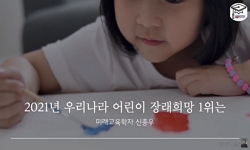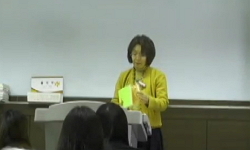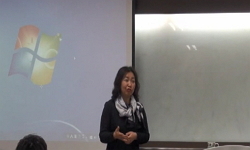This writing is to be wished to examine the relation between writers and readers through the process that have investigated juvenile literature work that was inserted《child》during early 1920s. Therefore, I have wished to observe the special commun...
http://chineseinput.net/에서 pinyin(병음)방식으로 중국어를 변환할 수 있습니다.
변환된 중국어를 복사하여 사용하시면 됩니다.
- 中文 을 입력하시려면 zhongwen을 입력하시고 space를누르시면됩니다.
- 北京 을 입력하시려면 beijing을 입력하시고 space를 누르시면 됩니다.
《어린이》연구 : 1920년대 아동문학 작가와 독자의 관계를 중심으로 = A study of 《child》: Laying stress on the relation between juvenile literature writers and readers in 1920s
한글로보기부가정보
다국어 초록 (Multilingual Abstract)
This writing is to be wished to examine the relation between writers and readers through the process that have investigated juvenile literature work that was inserted《child》during early 1920s. Therefore, I have wished to observe the special communication method of juvenile literature from the most important special quality of composing juvenile literature. The literary peculiarity of juvenile literature is detected clearly in communication mode, and the peculiarity of this communication method is an inner primary element of juvenile literature because we consider that it is a main cause that how the relation between a sender and a listener is established to concept of juvenile literature. If we imagine children readers and define written texts are the only juvenile literature texts, production of juvenile literature should be restricted by the propensity of the consumption. That's the reason juvenile literature became more reader-directed than other literature genres. Writer's imagination about the peculiar personality of reader controls the production and the consumption of juvenile literature and propensity of communication that is always argued on it. In this article, I believe that the important factor of composing juvenile literature is in communication way, and wish to clear how it has been established and what has influenced on juvenile literature literary style. The writers of the early 1920s pictured the juvenile's mind as innocence and naivety, and it included that their unique inclination that children and adults were totally different. This point of view put the writers away from readers and they changed their method of treating readers. And the writers recognized children readers' peculiarity and could find suitable speaking form. 'Story' was having the meaning of 'Tell' strongly in juvenile literature of the 1920s, this was created through consciousness that form of relation between a sender and a listener in juvenile literature differs with adult literature. Special method of telling a story is an oral narration. Specially, Bangjeonghwan emphasized that 'Telling' is more important means than 'Get to be read'. It means that an oral narration was emphasizing at that time and 'talking' form was preferred to a lettered text. Therefore, 'writing' action that could show the writer's personality in juvenile literature was pushed out by 'talking' action. In juvenile literature, 'talking' action means that the focus is put on the listener. Now we can see juvenile literature texts of 《child》 take an oral narration as a important frame unlike other literature texts. 'haetseupnida' shows the will that standardizes the form of 'an oral narration'. 'haetseupnida' is distinguished with low ranked genre of other juvenile literature and it makes an fairy tale distinguished with other genres. The reason that the writer use 'haetseupnida' is they think the write must give the child reader impression that seems to tell a story. Now we can believe 'haetseupnida' has colloquialism differently with other genres and it reflects circumstance of 'Oral narration'. 'haetseupnida' even has a meaning of respect with the meaning of child respect. Now, 'haetseupnida' has a secure position as a customary ending of a word in the fairy tale.
목차 (Table of Contents)
- Ⅰ. 서론 = 1
- 1. 연구 목적과 연구사 검토 = 1
- 2. 연구 대상과 방법론 = 7
- Ⅱ. 근대적 아동관의 성립 = 9
- 1. 전통적 '兒孩'와 근대적 아동관 = 9
- Ⅰ. 서론 = 1
- 1. 연구 목적과 연구사 검토 = 1
- 2. 연구 대상과 방법론 = 7
- Ⅱ. 근대적 아동관의 성립 = 9
- 1. 전통적 '兒孩'와 근대적 아동관 = 9
- 2. '천도교소년회'와 개벽의 《어린이》 = 16
- Ⅲ. 《어린이》를 통해 살펴본 1920년대 아동문학의 성격 = 22
- 1. 아동문학 독자층의 분화와 '어린이' = 23
- 2. 아동문학의 커뮤니케이션 구조와 '口演'의 형식 = 29
- Ⅳ. 《어린이》의 종결어미 정착 과정 = 37
- 1. 《어린이》에 나타난 종결어미의 양상 = 41
- 2. 종결어미 '했습니다'와 동화의 연관성 = 66
- Ⅴ. 결론 = 69
- ■참고문헌 = 72
- ■Abstract = 75












